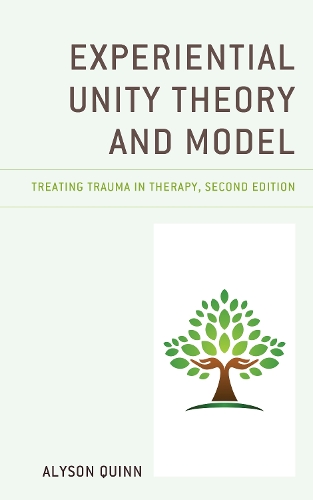
Experiential Unity Theory and Model: Treating Trauma in Therapy
(Hardback, Second Edition)
Publishing Details
Experiential Unity Theory and Model: Treating Trauma in Therapy
By (Author) Alyson Quinn
Bloomsbury Publishing PLC
Lexington Books
27th April 2022
Second Edition
United States
Classifications
Professional and Scholarly
Non Fiction
Psychotherapy: counselling
Social, group or collective psychology
616.89152
Physical Properties
Hardback
192
Width 160mm, Height 228mm, Spine 18mm
481g
Description
The second edition of Experiential Unity Theory and Model: Treating Trauma in Therapy addresses the current concerns dominating the field of group therapy and individual counseling. The experiential unity theory and model has been utilized for over fourteen years in psychiatric group therapy programs as a treatment for depression, anxiety, addictions, and other symptoms of trauma related distress.
Reviews
Distilling decades of clinical wisdom, Alyson Quinn gifts us with an accessible book that guides us through the tenuous terrain of trauma. Her birds-eye view of the landscape of literature offers us new avenues of inquiry. Through metaphors, drawings, and resourcing techniques, Quinn shows us how to co-create neural pathways toward healing. This book provides practical and immediate access to the brains secret side door. As a nursing professor striving to integrate trauma-informed practice and pedagogy, Quinn inspires me to achieve experiential unity between theory and praxis. A must-read for anyone in the helping professions.
-- Maki Iwase, Vancouver Community CollegeThe embodied and trauma-informed orientation to clinical practice described in this book is inspiring, informative, and useful. Quinn articulates a creative, whole-person model that serves as a comprehensive guide for healing and transformation through experiential engagement with the body, heart, and mind.
-- Loretta Pyles, State University of New York at Albany and author of Healing Justice: Holistic Self-Care for Change MakersQuinn takes us one step ahead by building on trauma therapies and neuroscience, which she summarizes in an ingenious and comprehensive way. Quinn offers an innovative and integrative trauma therapy that brings left and right hemispheres together, while protecting the client from being retraumatized. This book is a must-read for trauma clinicians.
-- Nez Elik, private practiceAuthor Bio
Alyson Quinn is counselor and group therapist.
